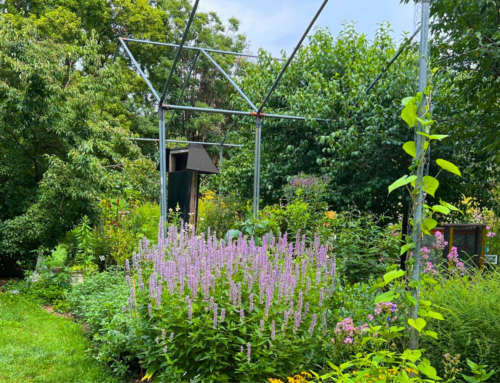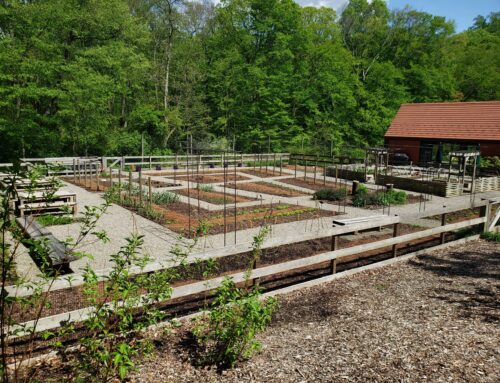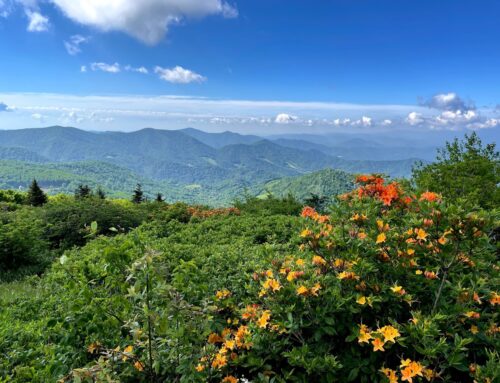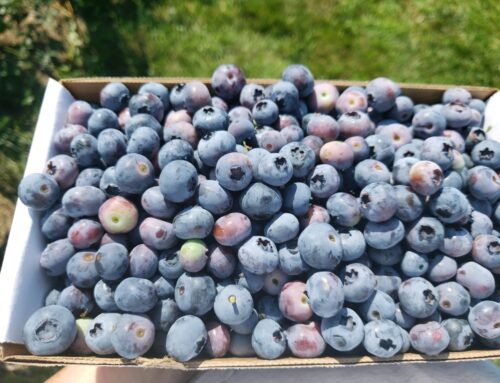What’s an easy to do family project, fun to observe all year and a great way to help our native bee pollinators? One answer to this question is: make your own native bee house! We’ve all seen various native bee homes for sale or placed in a garden. There are a few at Tyler, and we hope to have more for our visitors to enjoy.
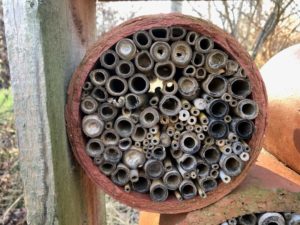
We know honey bees live together in a hive, and there are some native bees that are also ‘social’ bees, living together as a group, but the majority of the nearly 4,000 species of native bees are solitary. The gentle mason bee, of the genus Osmia, is common to our area and they are an extraordinary pollinator. We can attract these small bees by offering them a homemade native bee house, allowing us to watch the action right in our own gardens. There are important features to include in the design, but let’s first take a look at how the mason bee creates her own nest, so we understand what she is looking for in our homemade bee house.
In nature, each female mason bee finds her own home, searching for existing holes to use as her nest. She might use a hollow stem or even a tunnel made by beetles. She lays individual eggs and provisions them with food made from pollen and nectar. The eggs are sealed into their own chambers with a mud cap. The eggs then hatch into larvae, eat from the pollen ball, and soon spin a cocoon where they become adult bees, waiting all winter for the warm spring temperatures to arrive and begin the cycle again.
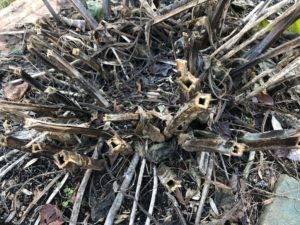
Now we get to the tips to consider when constructing your bee home that will help you be successful in raising these important early pollinators. Nesting tubes should be about 6 inches in length, closed at the back (to eliminate an access point for parasites) and have a diameter of ~.3 inches. Interestingly, these bees will lay their female eggs first, at the back of the horizontal tube where they are protected from woodpeckers and other predators. If your tubes are too short, only male eggs will be laid. In order to increase the potential for next year’s generation of bees, make sure you use longer tubes so more female eggs are laid.
Periodic cleaning of the tubes is required to prevent the spread of disease and to keep the parasite numbers down. The individual tubes shouldn’t be glued, so you can easily remove them to facilitate cleaning. Or you may choose to use sturdy paper straw tubes allowing you to just replace the tubes year to year.
A few tips to avoid the build-up of mold: a small roof overhang lessens dampness from rain; southeast or east facing holes attract warmth to help keep the nests dry; and avoiding using plastic or non-breathable tubes allows for quicker evaporation. The preference of many is paper tubes, or even natural plant stems with the ends closed off.
Avoid sharp edges within the tube, as they could damage the emerging bee’s wings or bodies as they crawl to the exit hole.
We want to avoid homes that dangle in the air from a wire or string. A solid mount is important at a height of 4-7 feet for easier observation.
Some other options you may want to consider if you have any stumps or larger logs on your property: drill about twenty holes into the wood, spaced about an inch apart and six inches in length. Remember to place the openings towards the east or south. These are solitary bees, so don’t offer too many tubes in any one area.
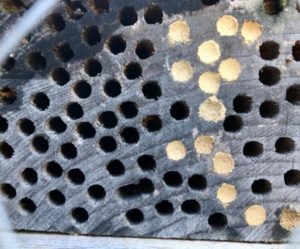
Now what? There are lots of designs to consider, so gather your ideas and supplies, keeping these tips in mind. Getting your bee house installed by April should work out great. In the meantime, make sure you are offering the bees an attractive environment, which includes sources of abundant pollen and nectar along with a mud source. Native spring flowering shrubs, trees and flowers will provide the food, and our typically damp springs will ensure a good supply of mud for sealing the individual chambers.
The more we learn about our native bees and the valuable pollinating they provide for our food supply, the more we can share this information with our friends and families. There is so much we can do to help them, and a homemade bee house will be a nice reminder to continue sharing ideas with others as we enjoy this addition to our gardens.
Please visit the Xerces Society website for details on how to build a variety of native bee homes, which includes some fabulous photos of developing bees in their man-made homes.



